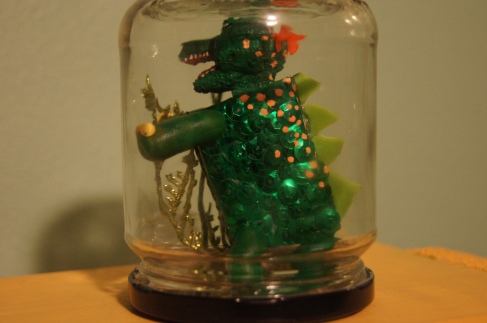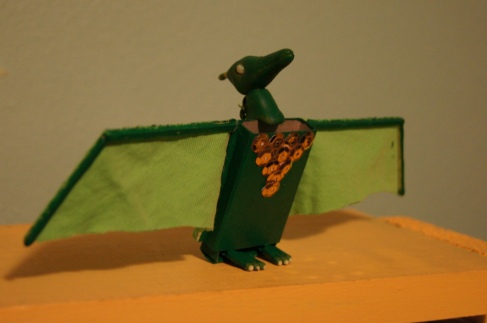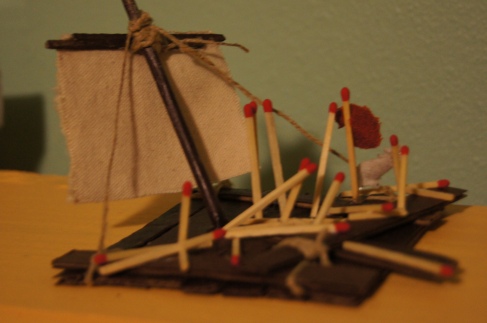Earlier this semester, during a break (procrastination) from grad school, work, internship search, and planning for the matchbox gala, I was killing some time on the youtube and came across a commencement speech given to the University of the Arts class of 2012 by Neil Gaiman, one of my favorite authors. In his speech he discusses his journey to becoming a writer having never went to college. How he became a better writer by writing, his failures and rejections, and the hopelessness he faced when the prospects of achieving his dreams seemed too great. True to form, he also included his personal recipe for success in life. Although I appreciated his personal spin, much of his advice could be found in many other commencement or otherwise motivational speeches. What stayed with me was his final prescription; make good art, it will get you through the good times and it will get you through the bad times. Leg crushed and eaten by a mutated boa constrictor; make good art. IRS on your trail; make good art. Cat exploded; make good art. Someone on the internet thinks what you’re doing is stupid or evil or it’s all been done before; make good art. Probably things will work out somehow, eventually time will take the sting away, and that doesn’t even matter. Do what only you can do best; make good art.
Now, this brings up an interesting question. What is good art? The question ‘what is art?’ often arises; and has since before Andy Warhol created abstract paintings using his own urine and reactive copper paint, before Duchamp painted a mustache on the Mona Lisa. The question, what is ‘good art’ then is even more complicated. For me art is a creation that speaks to, and speaks from, one’s personal truths. Art is a reflection of some aspect of oneself. Good art then, is when that reflection can connect with the personal truths of others. My personal truth is that I love creating, I love being outdoors, and I love my sense of humor, I value my imagination above all else. To quote André Breton “Beloved imagination, what I most like in you is your unsparing quality”.
Several weeks ago I came down with a cold. Unable to fully concentrate on my readings, having to constantly attend to my runny nose and in a mental fog of cold medicine, I followed Neil’s advice and made art. With the matchbox gala on the horizon, I decided to make matchbox art. The first matchbox I ever made, before even knowing I was coming to Naropa was a dinosaur; so I decided to start there. Eventually, I noticed that I was actually starting to feel better. I was so focused on what I was doing that I didn’t notice when my sinuses were plugged or feel the need to cough every time there was a tickle in my throat.
It was another side of my truth that brought me to Naropa and led to my involvement with the Naropa Community Art Studio-International project; I care very much about people and I want to facilitate others finding their own truth and expression, and live their lives to the fullest, I will cry out against injustice, and I do not give up easily. Recently in our preparations, we read several articles concerning sex-trafficking worldwide and specifically in Cambodia. These articles discussed the violence inflicted upon those forced into prostitution; verbal abuse, physical beatings, early sexual abuse, traumatic head injuries, STDs, and rape (Farley et al., 2003). It is not often thought that prostitutes are raped, but when someone is unable to decline their sexual partners due to threats of violence, or they are physically forced into sex, beaten, drugged, and taken advantage of, that is rape.
In Cambodia, young girls are often unknowingly sold to brothels by their families. They are told there are jobs in factories and restaurants then given an advance on their daughter’s first paycheck. That advance then becomes a debt the girls must pay off through enslavement at a brothel. Their virginity is sold for $500, after which the brothel rents them to 6-7 men each day to masturbate into for a price of $2 (Freed, 2003).
I have again been feeling sick recently. Not a physical sickness, but one of the soul. How can the efforts of twelve make a dent in what is often referred to as the ‘world’s oldest profession’? How can we impact a problem that exists in almost every culture worldwide? How can we do something positive in Cambodia when it is estimated that 59%-80% of Cambodian men have paid for sex at least once, by far the highest of any other country? I feel hopeless and helpless. What went wrong in our evolution? This malice and brutality does not exist in other animals, no other species beats their mates unconscious before it rapes them. I feel like we are fighting back a wildfire with squirt guns and the fire keeps growing every day. We can keep treating the burn victims but this problem requires systemic changes. We need to change how our global culture views masculinity and power.
So what do I do with these feelings of helplessness, hopelessness, fear in facing the overwhelming immensity of the problem? I make good art. I have experienced the profound healing power of art in my own life. Making art has helped me out of this mire of helplessness, fear, and anger before. Prostitution is not a one-sided problem. I believe those who perpetuate this abuse are in need of healing just as much as those they hurt. I believe art can heal the world, and I do not give up easily.
By James Huffman
Farley, M., Cotton, A., Lynne, J., Zumbeck, S., Spiwak, F., Reyes, M. E., et al. (2003). Prostitution and trafficking in nine countries: an update on violence and posttraumatic stress disorder. Journal of Trauma Practice, 2(3), 33-74.
Freed, W. (2003). From duty to despair: brothel prostitution in cambodia. Journal of Trauma Practice, 2(3), 133-146.



